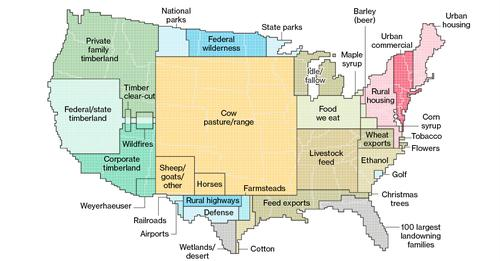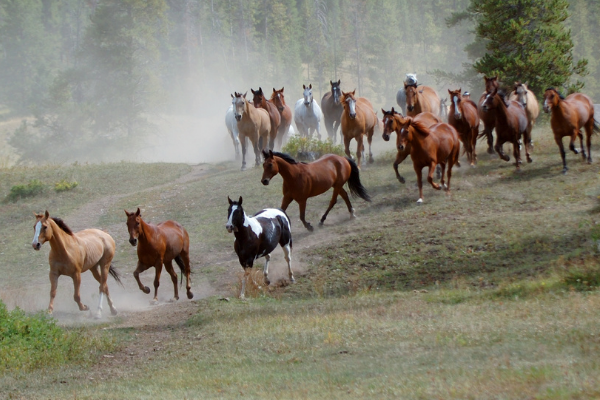Today the Bureau of Land Management’s lies and deception will forever destroy the relationships and lives of the wild horses who call Colorado’s Sand Wash Basin home. Using the drought as an excuse and calling it an emergency, the agency is going to chase 780 wild horses with a helicopter and rip them from their homes on public lands despite a last-minute appeal by Gov. Jared Polis to put a moratorium on the mass removal for at least six months.
While the BLM’s Little Snake Field Office claims the 155,000-acre herd management area can only sustain a maximum of 363 wild horses, at the same time it permits 12,026 sheep and 300 cattle to graze in the Sand Wash allotments.
This eradication of Colorado’s remaining wild horses is just the latest example of the BLM’s long-running efforts to undermine the Wild Free-Roaming Horse and Burro Act. In lickspittle lockstep with the small but richly subsidized livestock-ranching industry, the BLM has effectively promulgated three falsehoods: That the vast American West is overpopulated by wild horses, that they breed uncontrollably, and that they have no natural predators to keep their populations in check and create a healthy, balanced ecosystem.
Therefore, only the BLM can “solve” the wild horse problem it invented through a continual, costly and now escalating campaign to remove as many horses as they can from their ancestral homelands, ship off most of the captured wild animals to faraway corrals and pastures, and return a few remaining mares back to the range after drugging them with dangerous fertility-control drugs. This vortex of spin has not only allowed the BLM’s wild horse removals to continue unabated but also to accelerate with hastily scheduled, unvetted emergency roundups across the American West.
It’s all BLM hogwash. Of the 245 million acres of public land managed by the BLM, 155 million is open to livestock grazing. By contrast, wild horses are restricted to a measly 26.9 million acres, which they must share with livestock. Since the passage of WHBA, wild horses have lost 41 percent of their habitat — more than 20 million acres.
For decades, the BLM has ignored science to justify its wild horse eradication efforts. As the Governmental Accountability Office declared back in 1990, “Despite congressional direction, BLM’S decisions on how many wild horses to remove from federal rangelands have not been based on direct evidence that existing wild populations exceed what the range can support.”
In 2013, the National Academy of Science stated, “How Appropriate Management Levels [for wild horse herds] are established, monitored, and adjusted is not transparent to stakeholders, supported by scientific information, or amenable to adaptation with new information and environmental and social change.”
Study after study, across numerous species—from deer to coyotes to wolves and mountain lions—has found that when animals living free in their own complex social groups and ecosystems are killed or trapped, the result is more breeding and more disruption to their natural social orders. As the NAS declared of the BLM’s wild horse roundups: “Removals are likely to keep the population at a size that maximizes population growth rate, which in turn maximizes the number of animals that must be removed through holding facilities.” In 2021, BLM still ignores science. A new study of mountain lion predation showed that 60 percent of the mountain lion diets in the Great Basin region of western Nevada were made up of wild horses of varying ages and that 10 of the 13 big cats tracked were predominantly choosing horses for kill.

“Our data suggest that cougars may be an effective predator of feral [sic] horses and that some of our previous assumptions about this relationship should be reevaluated and integrated into management and planning,” the study, led by researcher Alyson Andreasen of the University of Nevada, Reno, stated. Previous research focused on the reintroduced wild Przewalski horses in Hustai National Park, Mongolia has documented that wolves prey on wild-horse foals.
Of course, if there’s anything the livestock grazers who the BLM slavishly support hate more than wild horses, it’s the wolves and mountain lions who occasionally prey on their cattle and sheep. And that’s where the duplicity of the BLM and other federal agencies comes into stark relief. Each year state and federal agencies kill thousands of these predators and fight any and all attempts to place limits on private trophy hunting or to reintroduce these wide-ranging animals to the habitats and ecosystems where they could resume their vital roles as apex predators.
In 2020, a shadowy U.S. Department of Agriculture unit called Wildlife Services killed thousands of predators, usually at the request of the livestock industry or hunting lobby. Using traps, snares, poisons, gas, and aerial gunning, Wildlife Services killed 276 mountain lions and 381 gray wolves, not to mention more than 62,000 coyotes. State agencies allow even more of these keystone species to be slaughtered, usually by hunters. In Utah, for example, a record 702 mountain lions were killed by hunters and the USDA’s Wildlife Services during the 2020-21 hunting season.
It’s also open season on wolves, following their removal from the Endangered Species List earlier this year in one of the last acts of the Trump Administration. With no federal restrictions to stop them, hunting groups and the livestock lobbies in several states rushed to schedule widespread wolf hunts, decimating once-thriving local populations and threatening a wider return to their once vast domain. Gray wolf packs are known to be in most of the states with resident herds of wild horses, including Oregon, California, Idaho, Montana, Wyoming, and Washington, with sightings in other states, among them Nevada and Utah.
Ranchers who run their livestock on public land win every which way with this incestuous culling and killing spree. They graze their domestic animals at a fraction of what it would cost to fatten them up on private land, they get compensated for any livestock killed by predators (and are notorious for inflating those numbers), and then they get to call in Wildlife Services to have the predators killed.
“Wildlife Services wastes millions of taxpayer dollars by spending far more to kill predators than the actual damage those predators cause,” says the wildlife advocacy group Predator Defense, echoing wild horse advocates’ critique of the BLM. “Scientific proof that Wildlife Services practices control livestock damage is markedly lacking.
“Despite the opposition of environmentalists and concerned citizens, and a series of scathing advisory reports over the years, Wildlife Services has survived and prospered, primarily as a pet program of the powerful livestock industry.”
So the BLM and Wildlife Services perpetuate a self-reinforcing series of falsehoods, deny science and refuse to consider appropriate solutions in order to remove wild horses from their rightful place on the range and to keep predators at bay, all at great expense to the taxpayer and to toady up to their cronies in the ranching and hunting lobbies.
Friends of Animals has another solution. Leave the wildlife alone on public lands instead of having public lands serve the meat industry, and then there is no need to spend millions of taxpayer dollars rounding up wild horses and killing mountain lions and wolves.
Until these rogue agencies are reformed and reined in—the best way to protect wild horses and other wildlife they share public lands with is to stop supporting the meat industry and
adopt a plant-based diet. Not only will you be saving wildlife and doomed cattle and sheep, but you’ll be also helping combat the climate crisis.
[Editor’s note: This is the fourth article in a series of Friends of Animals’ “Tales, Tails and Tells” blog posts that investigates the Bureau of Land Management’s continuing wild horse eradication campaign.
Previous articles:
National Geographic (Mis)Adventures writing about the wild horse ‘controversy’
Why the BLM’s use of drought to wipe out wild horses doesn’t hold water
BLM: Don’t blame wildfires on wild horses. Instead, use them as four-legged firefighters

